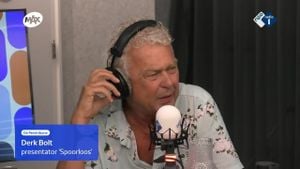Researchers have made significant strides in addressing the challenges posed by pre-implantation development arrest, which is prevalent during infertility treatment cycles. A study conducted by scientists at the Royan Institute has explored the effects of insulin–transferrin–selenium (ITS) and CHIR99021 on human embryos experiencing developmental arrest.
Infertility treatments through in vitro fertilization (IVF) present numerous challenges, with approximately 40 to 50% of embryos failing to progress to the blastocyst stage due to various factors. These arrested embryos were the focus of the recent research, aiming to determine whether specific compounds could stimulate their development.
The researchers utilized embryos obtained from infertility cycles and cultured them with varying concentrations of ITS and CHIR99021, aiming to find optimal conditions conducive to embryo growth. The results were promising. The group treated with CHIR99021 showed the most success, with 82.5% of the embryos progressing from the arrested state compared to only 10% of the control group. Similarly, the ITS group saw 47.5% of treated embryos advance.
Researchers noted significant decreases in arrest rates and increases in developmental progress. More important, the study found notable enhancements not only to the morphological quality of the developing embryos but also to the expression levels of key pluripotency and cell-cycle-related genes, indicating the successful reactivation of developmental pathways.
Underlying these developments is the action of the compounds used. CHIR99021 acts as a GSK3 inhibitor, stimulating pathways associated with cell proliferation, such as the PI3K signaling pathway. On the other hand, ITS, comprising insulin, transferrin, and selenium, is already known to improve the viability and proliferation of various cell types.
The findings indicate how CHIR99021 and ITS may alleviate embryonic arrest by promoting cell-cycle induction and enabling embryos to continue their development toward the blastocyst stage, which is necessary for successful implantation. Immunofluorescence staining confirmed the expression of NANOG protein, which is pivotal for maintaining pluripotency, aligned with observations of gene expression trends.
The study's authors underline the need for comprehensive characterization of the resultant blastocysts to validate the clinical applications of ITS and CHIR99021, especially for women facing challenges such as advanced maternal age or male factor infertility. Future research could help elucidate the underlying mechanisms and potentially lead to widespread improvements in culture systems for human embryos.
GSK3 inhibition by CHIR99021 and the application of ITS can alleviate arrest in human embryos, promote cell-cycle induction, and enable progression to the blastocyst stage. Hence, the hope remains high for using these methods to improve the odds of successful pregnancies from assisted reproductive technologies.
<p>The investigative effort is not only aimed at overcoming immediate developmental challenges but also at setting the stage for more successful outcomes for couples facing infertility. A comprehensive approach to analyzing and implementing these improvements could reshape the future of IVF treatments worldwide.


